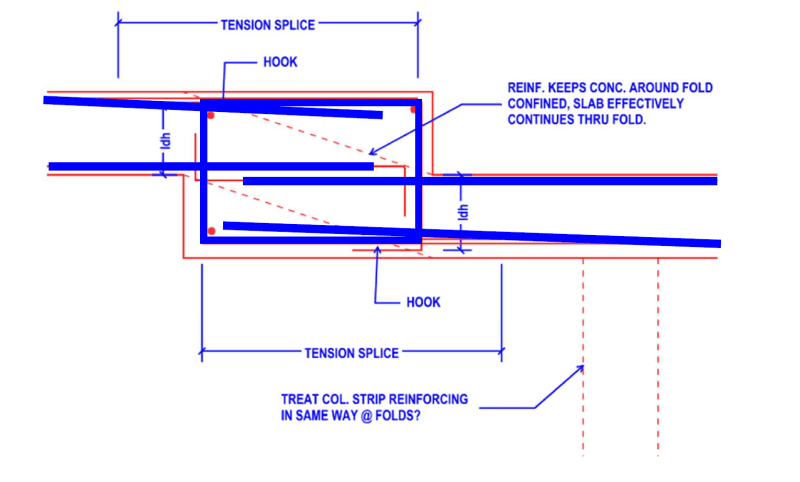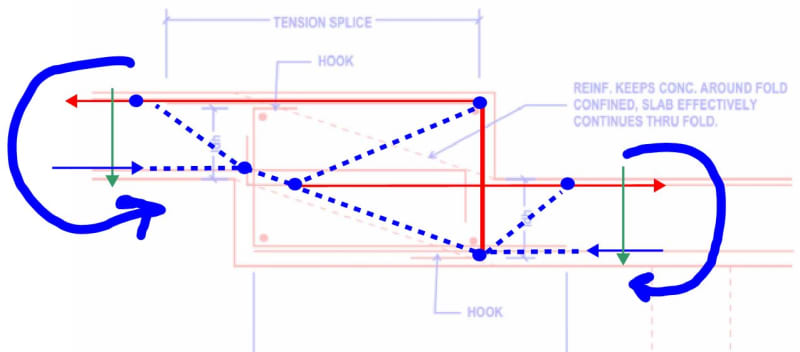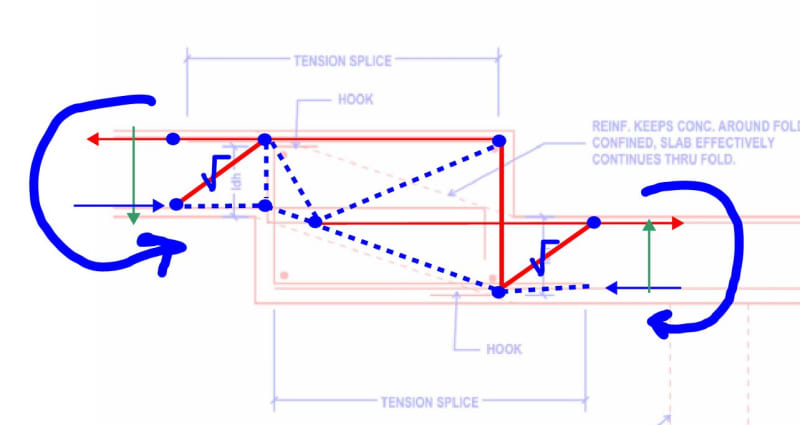Hello,
I have seen some discussion in the past on this and it is really something I want to settle. In my experience, slab depressions frequently occur anywhere in a slab and cannot often be supported in a beam like fashion. I like to think that as long as the area of the fold concrete is confined and rebars are developed, the slab fold can be ignored, although it may add some flexibility. The fold won't necessarily act as a stiff rib type element Thus when modeling, ignore the fold unless a deep enough fold justifies treating the slabs as simply supported. Trying to model the fold will result in greater complexity that may not be necessary.
Often, I have seen the "length of fold" quite large. Sometimes detailed as a function of slab depth, sometimes depression depth. It seems to be in the order of more than twice slab depth to the nearest foot or 1.5'. Can someone shed light on this? Is it to facilitate strut tie? is it simply to limit slope of effective slab thru the fold?
My other concern is that I have a situation where I have a fold very close to a column and slab strip rebar will have to run thru it. As long as bars are developed thru the fold is it enough? in my case the column would be supporting the low portion of slab.
Please see my attached sketch
I have seen some discussion in the past on this and it is really something I want to settle. In my experience, slab depressions frequently occur anywhere in a slab and cannot often be supported in a beam like fashion. I like to think that as long as the area of the fold concrete is confined and rebars are developed, the slab fold can be ignored, although it may add some flexibility. The fold won't necessarily act as a stiff rib type element Thus when modeling, ignore the fold unless a deep enough fold justifies treating the slabs as simply supported. Trying to model the fold will result in greater complexity that may not be necessary.
Often, I have seen the "length of fold" quite large. Sometimes detailed as a function of slab depth, sometimes depression depth. It seems to be in the order of more than twice slab depth to the nearest foot or 1.5'. Can someone shed light on this? Is it to facilitate strut tie? is it simply to limit slope of effective slab thru the fold?
My other concern is that I have a situation where I have a fold very close to a column and slab strip rebar will have to run thru it. As long as bars are developed thru the fold is it enough? in my case the column would be supporting the low portion of slab.
Please see my attached sketch



